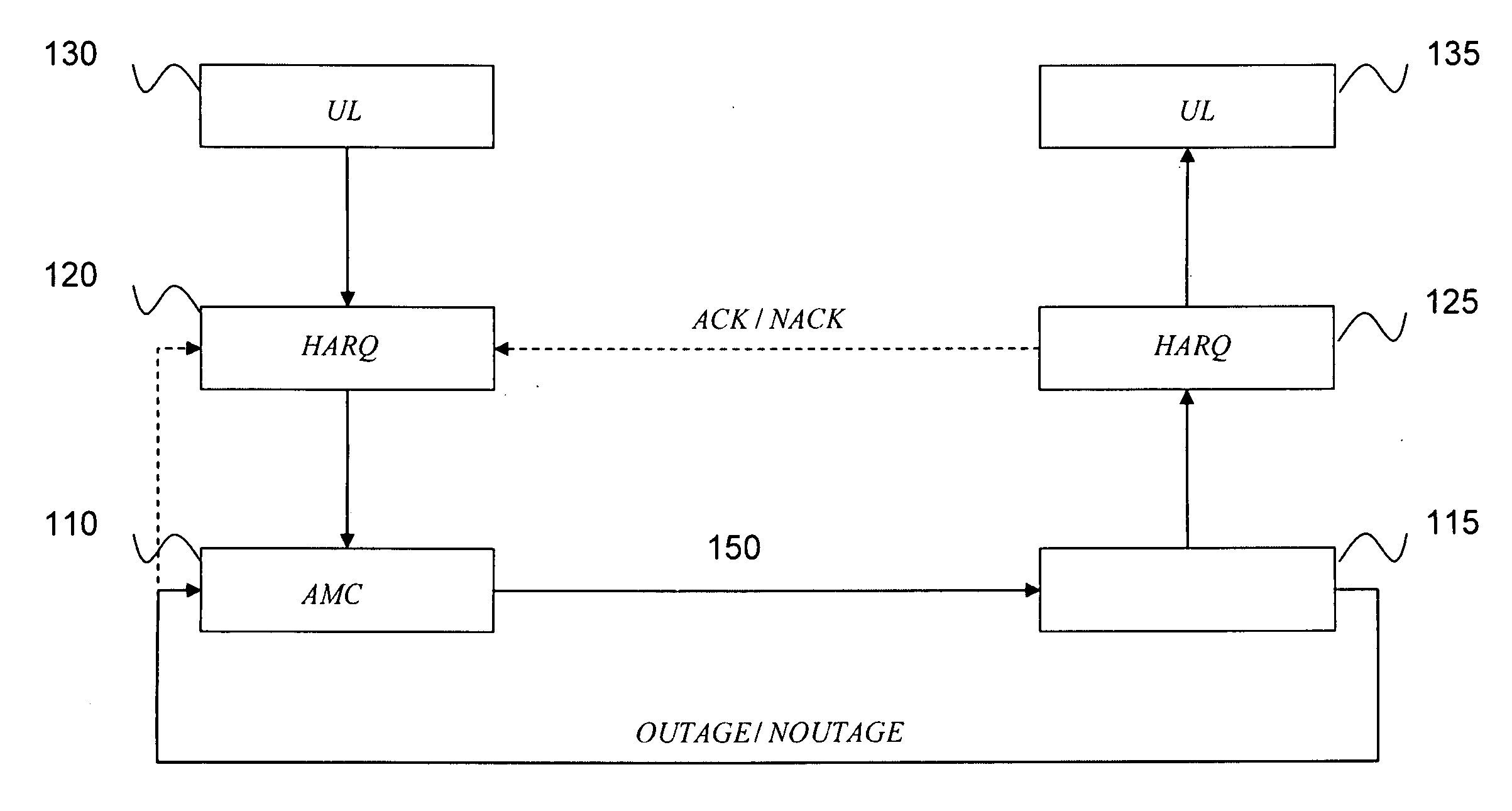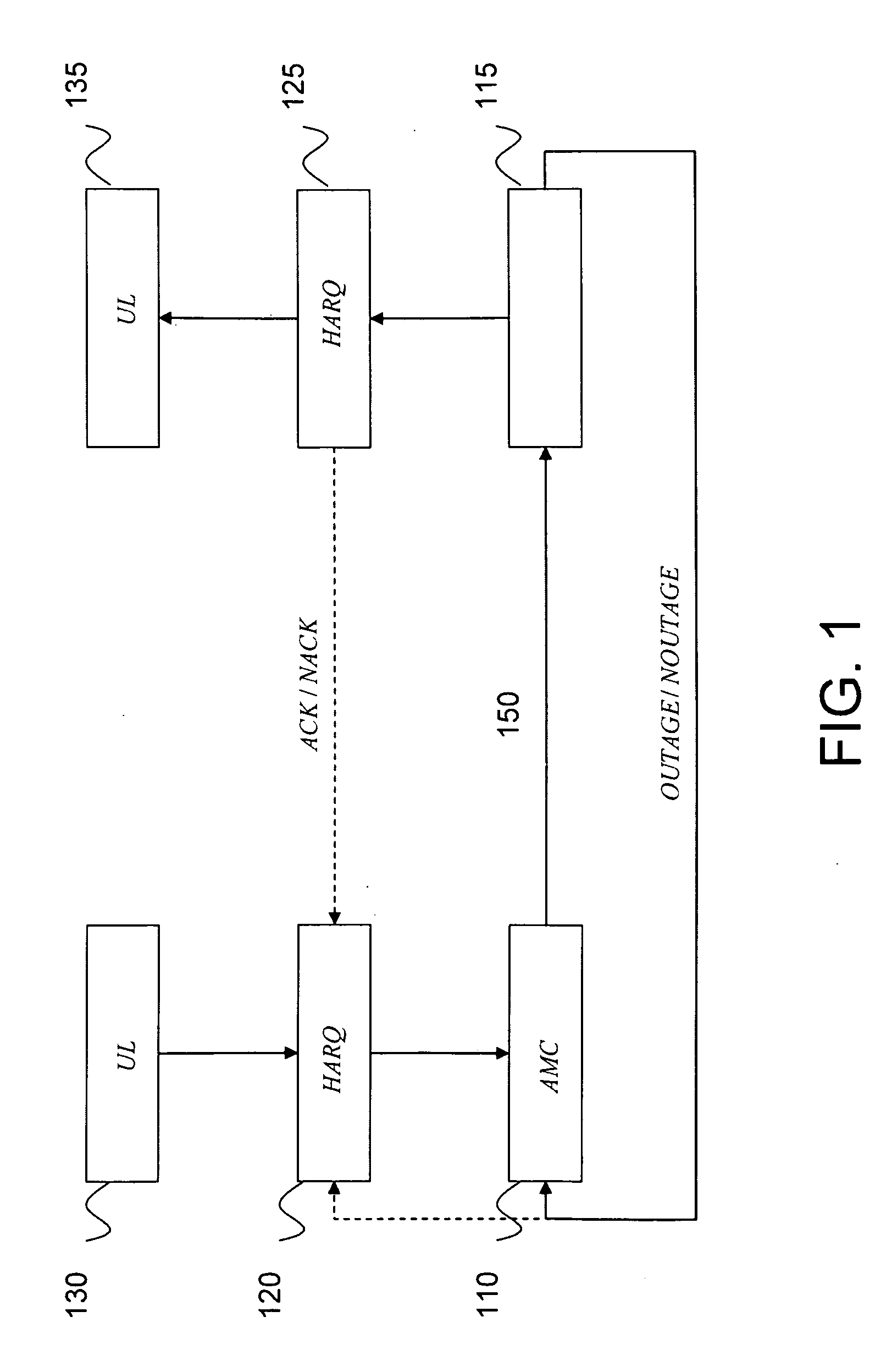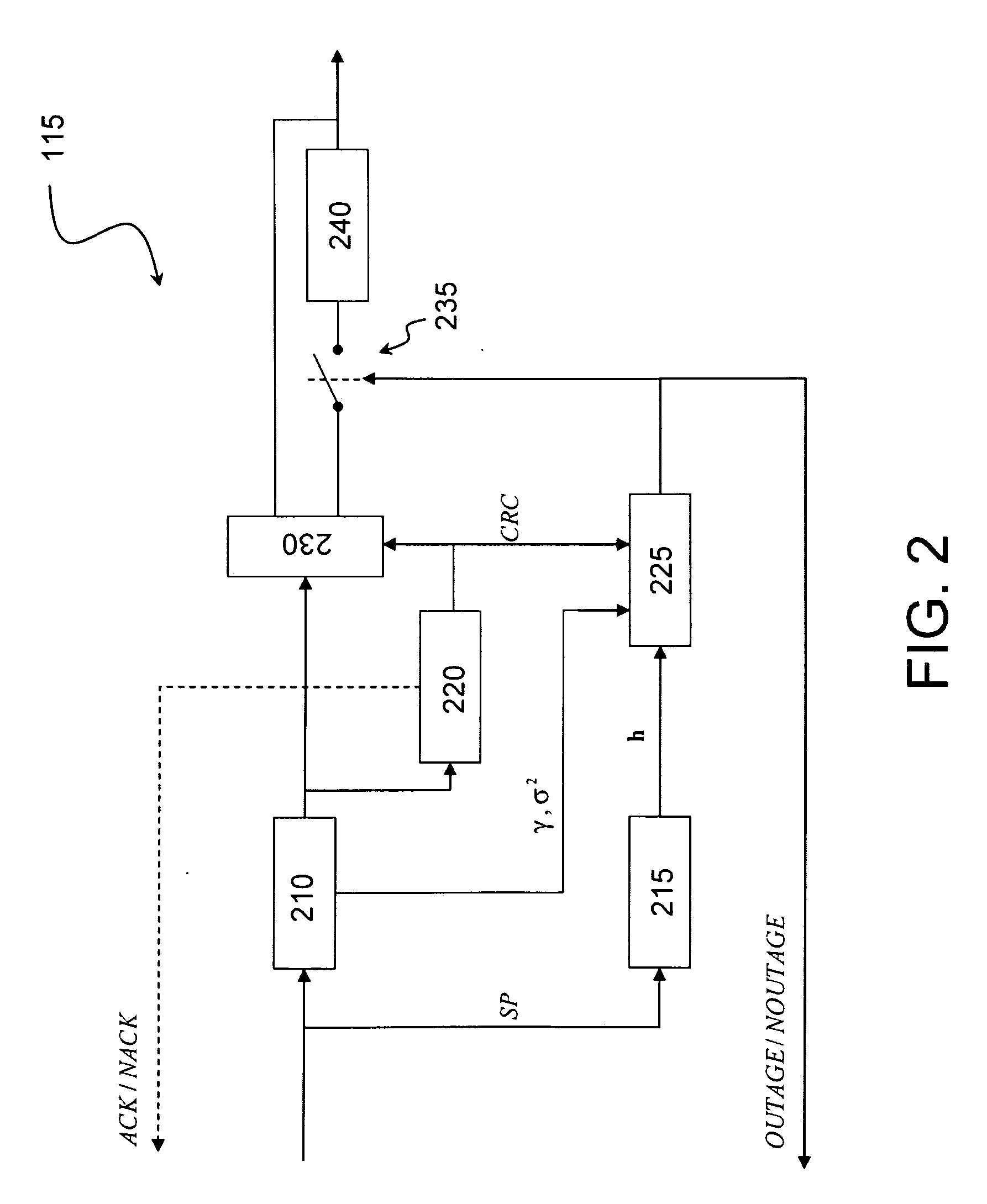Link adaptation telecommunication system
a technology of telecommunication system and link, applied in the direction of link quality based transmission modification, transmission system, sustainable building, etc., can solve the problem that the selection of mcs scheme cannot be fully used, the packet error rate is overestimated or on the contrary, and the channel capacity is underused. the problem of high insufficient to allow for satisfactory transmission over the channel
- Summary
- Abstract
- Description
- Claims
- Application Information
AI Technical Summary
Problems solved by technology
Method used
Image
Examples
first embodiment
[0051] the receiver first calculates the CRC of the received packet and determines if the packet contains errors. If so, the receiver evaluates the “instantaneous” mutual information according to (2) and (3), or (4) for the packet and compares it with the transmission rate R. If an outage of the channel is diagnosed, the receiver informs the transmitter of this. The latter then adopts the most robust MCS scheme for the following transmission, i.e. the one that corresponds to the lowest transmission rate, Rmin, expecting Iinst>Rmin to be verified for this transmission. In the absence of a channel outage, the receiver provides the transmitter with the current level of the signal to noise ratio and the latter uses a table to determine the most appropriate MCS scheme, according to a conventional AMC adaptation mechanism.
second embodiment
[0052]According to the invention, the wireless telecommunication system implements an adaptation mechanism of the IR HARQ type.
[0053]The receiver determines if a received packet contains errors using a CRC calculation. If there is no error, the receiver transmits an acknowledgement signal ACK. If there is an error, the receiver transmits a negative acknowledgement NACK signal to the transmitter and verifies whether
Iinst>knPlogQ,
where np is the number of bits of the punctured code. If the inequality is true, there is an outage of the channel. The transmitter then retransmits at once all of the bits eliminated during the puncturing step expecting
Iinst>knlogQ
at the next transmission. However, if there is no outage, the redundancy bits are transmitted incrementally at each new retransmission request as with a conventional IR HARQ mechanism, in other words only some of the eliminated bits are transmitted at each request.
[0054]According to a third preferred embodiment of the inventi...
fourth embodiment
[0060] the telecommunication system uses a dynamic allocation of access resources to the various users. These access resources can be frequencies, frequency bands, transmission intervals, orthogonal codes, or combinations thereof. A particular case of interest related to frequency bands as access resources concerns an OFDM telecommunication system. In such a system the access resources can be ranges of carrier frequencies of the OFDM frequency multiplex. For a given channel instance, some ranges of carrier frequencies may be affected by fading while other ranges are not affected by the same. If the receiver detects a packet with errors via the CRC and if it determines that the channel is in an outage situation, it transmits as previously a negative acknowledgement signal NACK as well as a channel outage signal OUTAGE. The transmitter, in practice the base station, allocates a new access resource to the user affected by the channel outage. The error packet can be retransmitted using ...
PUM
 Login to View More
Login to View More Abstract
Description
Claims
Application Information
 Login to View More
Login to View More - R&D
- Intellectual Property
- Life Sciences
- Materials
- Tech Scout
- Unparalleled Data Quality
- Higher Quality Content
- 60% Fewer Hallucinations
Browse by: Latest US Patents, China's latest patents, Technical Efficacy Thesaurus, Application Domain, Technology Topic, Popular Technical Reports.
© 2025 PatSnap. All rights reserved.Legal|Privacy policy|Modern Slavery Act Transparency Statement|Sitemap|About US| Contact US: help@patsnap.com



